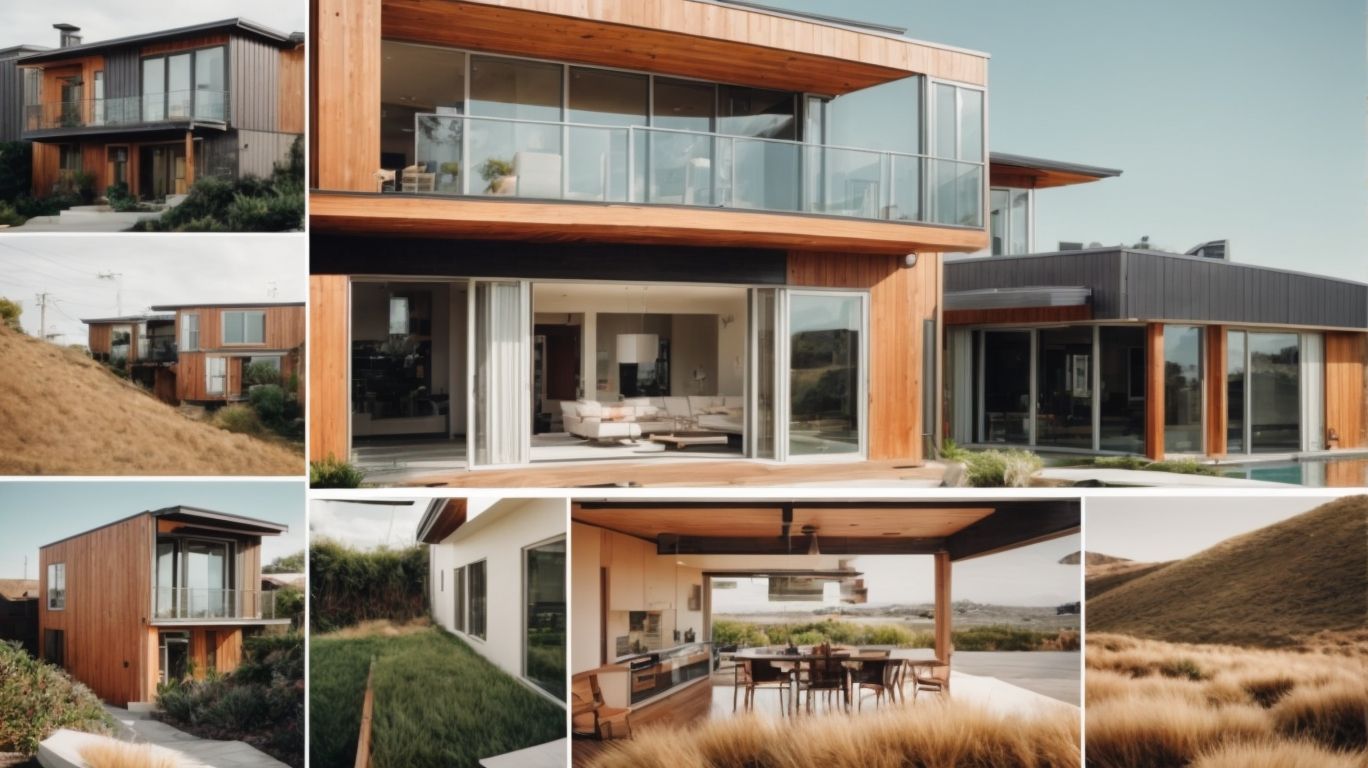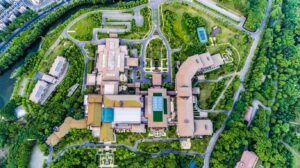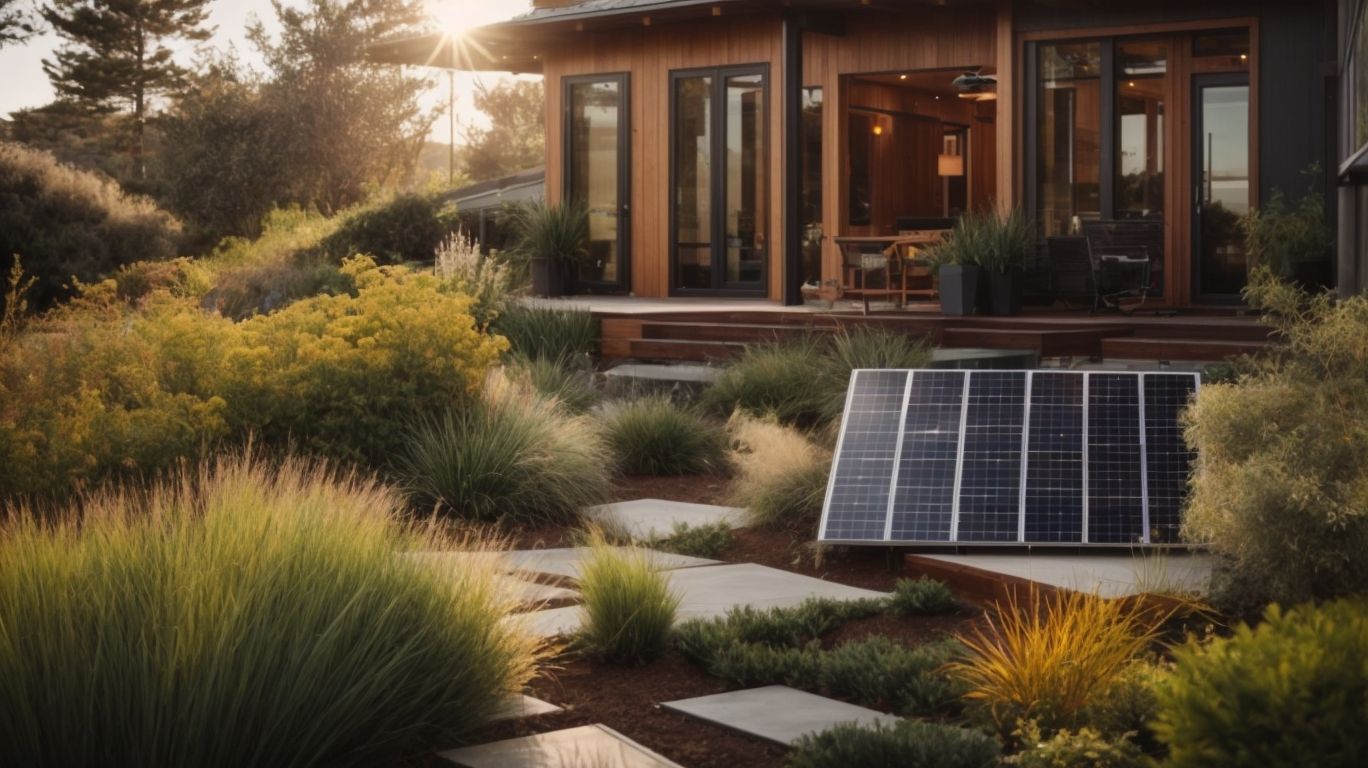
Prefab Perfection: Exploring Affordable Eco-Homes in the Bay Area
Are you curious about the rising trend of prefab homes in the Bay Area?
Learn about the different types of prefab options available, from modular homes to shipping container homes.
Discover the benefits of prefab homes, their environmental impact, the various types available in the Bay Area, the building process, and examples of affordable eco-homes.
Join us as we explore the challenges and advantages of building a prefab home in this thriving region.
What Are Prefab Homes?
Prefab homes, short for prefabricated homes, are residences that are built off-site in sections or modules and then transported to the home site for final assembly.
These innovative dwellings are changing the landscape of modern architecture by offering a blend of efficiency, sustainability, and affordability. The modular construction process allows for quicker build times and reduced waste during construction. Prefab homes are designed with eco-friendly practices in mind, often incorporating energy-efficient materials and technologies to minimize their environmental impact.
From passive solar designs to green roofs and rainwater harvesting systems, these homes showcase a range of sustainable features. The customizable nature of prefab homes allows homeowners to tailor their living spaces to suit their unique lifestyle preferences.
How Are Prefab Homes Different From Traditional Homes?
Prefab homes differ from traditional homes in their construction methods and design approaches, emphasizing sustainability, green technologies, and innovative building techniques.
Unlike traditional homes, prefab homes offer a greater level of design flexibility due to their modular nature. With prefab construction, homeowners have the opportunity to customize various aspects of their home, from layout configurations to interior finishes, enabling them to create a personalized living space that meets their unique needs and preferences.
In addition, the construction processes involved in prefab homes are often more efficient and streamlined, utilizing advanced manufacturing techniques and precision engineering to minimize waste and maximize energy efficiency. This integration of alternative building methods not only speeds up the construction timeline but also reduces the environmental impact of the building process, aligning with sustainable practices and eco-friendly innovations.
Why Are Prefab Homes Becoming Popular in the Bay Area?
Prefab homes are gaining popularity in the Bay Area due to their affordability, sustainability features, and innovative design solutions that cater to the urban living needs of the community.
These homes offer a range of benefits that align with current trends in sustainable development and affordable urban housing. With a focus on eco-friendly materials and energy-efficient construction practices, prefab homes contribute to reducing the environmental impact of traditional building methods. Their cost-effective nature makes them an attractive option for individuals looking to own a home in the competitive Bay Area housing market. The efficient use of resources and shorter construction timelines associated with prefab homes further add to their appeal for those seeking a modern and sustainable urban living experience.
What Are The Benefits of Prefab Homes?
Prefab homes offer numerous benefits, including affordable housing solutions, eco-friendly construction, sustainable practices, energy-efficient designs, and cost-effective building methods.
These alternative building structures contribute to positive environmental impacts by reducing waste and utilizing sustainable materials.
Prefab homes are known for their innovative construction techniques, allowing for quicker assembly and lower labor costs. The streamlined manufacturing process of prefabricated homes not only results in energy savings during construction but also promotes efficient use of resources throughout the building process.
In essence, prefab homes represent a modern approach to sustainable architecture that emphasizes both functionality and environmental responsibility.
Are Prefab Homes More Affordable Than Traditional Homes?
Prefab homes are often more affordable than traditional homes, offering cost-effective building solutions that cater to budget-conscious individuals seeking affordable living options.
These cost savings stem from the efficient assembly-line construction process of prefab homes, which reduces labor costs and construction time. Prefab homes are customizable to fit various budgets, allowing homeowners to select features and finishes that align with their financial goals. The affordability of prefab homes also extends to long-term maintenance costs, as these homes are typically built with durable materials that require minimal upkeep, resulting in further savings over time.
Prefab homes present a compelling option for those looking for a budget-friendly housing solution without compromising on quality.
Do Prefab Homes Have a Smaller Environmental Footprint?
Prefab homes are designed to have a smaller environmental footprint compared to traditional homes, incorporating sustainable practices, environmentally-friendly materials, and eco-conscious construction methods.
These innovative dwellings utilize low-impact construction techniques that reduce waste and energy consumption during both their building process and their lifespan. By utilizing renewable materials such as reclaimed wood, bamboo flooring, and recycled steel, prefab homes offer a more sustainable alternative to traditional construction. Eco-friendly design choices, like energy-efficient appliances and solar panel installations, contribute to creating greener living spaces that are in harmony with the environment.
What Are The Different Types of Prefab Homes Available in the Bay Area?
In the Bay Area, various types of prefab homes are available, including modular homes, panelized homes, pre-cut homes, and even innovative shipping container homes that contribute to sustainable development.
Each type of prefab home offers unique advantages.
- Modular homes are constructed in sections off-site and then assembled on location, providing flexibility in design and quick on-site assembly.
- Panelized homes consist of pre-built wall sections that are transported and assembled on-site, offering efficient construction and energy-efficient properties.
- Pre-cut homes involve pre-fabricated materials that are cut to precise measurements, reducing waste during construction.
- Shipping container homes repurpose steel shipping containers into living spaces, offering a modern, eco-friendly alternative with a focus on sustainable living.
Modular Homes
Modular homes are a popular prefab option known for their innovative design, modern architecture, and efficient construction methods that provide flexible living spaces.
These homes offer a wide range of design flexibility, allowing homeowners to customize layouts, finishes, and styles to suit their preferences. With advanced construction techniques, modular homes are built in a controlled factory setting, ensuring precision and quality. Incorporating modern architectural elements such as sleek lines, open floor plans, and energy-efficient features, these homes seamlessly blend contemporary design with innovative construction practices.
Panelized Homes
Panelized homes offer a sustainable prefab option that emphasizes green design, eco-friendly materials, and the integration of green technologies for sustainable and energy-efficient living.
These homes are constructed using panels that are prefabricated in a controlled environment, ensuring precision and minimizing waste during the building process. The use of eco-friendly materials such as sustainable wood, recycled steel, and energy-efficient windows further enhances the environmentally friendly nature of panelized homes.
They often incorporate green design principles like passive solar heating, maximizing natural light, and efficient insulation to reduce energy consumption and carbon footprint. The integration of smart technologies for energy management and renewable energy sources, like solar panels or geothermal systems, makes panelized homes a sustainable choice for eco-conscious individuals.
Pre-cut Homes
Pre-cut homes offer urban residents eco-housing options that utilize sustainable practices, low-impact construction methods, and efficient pre-cut materials for environmentally-conscious living.
With a focus on sustainability, pre-cut homes contribute to reduced waste generation during construction. By using precise designs and cutting materials off-site, the amount of on-site waste is significantly minimized. These homes often incorporate energy-efficient features such as solar panels, rainwater harvesting systems, and natural lighting solutions, further reducing their environmental footprint. The streamlined construction process of pre-cut homes also results in faster build times, lower labor costs, and decreased transportation emissions due to the compact packaging of pre-cut components.
Shipping Container Homes
Shipping container homes represent an innovative prefab solution that integrates affordable construction methods, smart home technologies, and renewable energy systems for sustainable and budget-friendly living.
These unique dwellings offer a modern twist on traditional housing, featuring sleek design elements and a versatile layout. Container homes are not only environmentally friendly but also cost-effective, making them an appealing option for those interested in sustainable urban living. The incorporation of smart home technologies further enhances the convenience and efficiency of these homes, allowing residents to control various functions with ease. The use of renewable energy systems, such as solar panels and wind turbines, reduces the carbon footprint while providing a reliable and independent power source.
What Are The Steps Involved in Building a Prefab Home?
Building a prefab home involves several key steps, including design and planning, factory construction of modules, and the transportation and on-site assembly of the prefabricated components.
The design stage sets the tone for the entire project, where architects and engineers work on creating detailed plans and layouts. Once the design is finalized, the factory construction phase begins, with each module being built in a controlled environment. This off-site construction process ensures quality control and cost-efficiency.
Once the modules are ready, they are transported to the site for assembly. Transportation of these large components requires careful coordination and logistics to ensure timely delivery and safe handling. On-site assembly brings everything together to create a complete and modern prefab home.
Design and Planning
The initial phase of building a prefab home involves meticulous design and planning to ensure sustainable, green, and innovative eco-design elements are integrated into the construction process.
This focus on design and planning in prefab home construction not only allows for the seamless incorporation of sustainable architecture principles but also plays a crucial role in minimizing environmental impact. By carefully considering factors such as energy efficiency, use of renewable materials, and passive heating and cooling techniques during the design stage, prefab homes can be more energy-efficient and environmentally friendly.
The integration of innovative eco-conscious elements, such as rainwater harvesting systems and solar panels, further enhances the sustainability of prefab homes, making them ideal choices for eco-conscious homeowners looking to reduce their carbon footprint.
Factory Construction
Factory construction plays a crucial role in prefab home building, focusing on modular design principles, sustainable construction practices, and the creation of energy-efficient homes in an efficient production environment.
During the factory construction phase, modular design processes streamline the development of various components, ensuring precision and quality control. Sustainable practices are integrated into every step, from sourcing eco-friendly materials to minimizing waste through efficient production methods.
Energy-efficient features such as solar panels, smart thermostats, and high-performance insulation are systematically incorporated into the prefab homes. This approach not only promotes sustainable living spaces but also offers cost-effective building solutions for homeowners looking to reduce their environmental impact and energy consumption.
Transportation and Assembly
The final stages of building a prefab home involve the transportation of modular components to the site and their seamless assembly, ensuring sustainable living spaces are created through cost-effective and efficient building practices.
These modular components, such as walls, floors, and roofs, are prefabricated off-site in controlled factory environments, which not only guarantees high-quality construction but also reduces waste and construction time. The precision in manufacturing these modules ensures a seamless fit during on-site assembly, leading to quicker completion of the overall structure. This method of building also allows for customization and flexibility in design, offering a wide range of layout options and sustainable features tailored to the homeowner’s preferences.
What Are Some Examples of Affordable Eco-Homes in the Bay Area?
The Bay Area showcases several examples of affordable eco-homes, such as the Proto Home, Blu Home, LivingHome, and Honomobo, that embody sustainable development principles through innovative prefab designs and green construction practices.
These homes not only offer eco-friendly living spaces but also integrate cutting-edge technology to reduce energy consumption and minimize environmental impact. For instance, Proto Home features a sleek modular design that can be customized to fit various locations, utilizing eco-friendly materials like recycled steel and wood.
Blu Home‘s prefabricated structures are built off-site to lower construction waste and optimize energy efficiency. LivingHome incorporates passive solar design and green roof systems to enhance energy efficiency and create a healthier indoor environment. Honomobo‘s innovative shipping container homes repurpose materials, promoting sustainability and affordability in urban settings.
The Proto Home
The Proto Home stands out as a prime example of affordable living that integrates sustainable practices to achieve energy savings and eco-conscious living in the Bay Area.
Its innovative design not only prioritizes affordability but also places a strong emphasis on environmental consciousness. With features like solar panels for renewable energy generation, rainwater harvesting systems for water efficiency, and smart home technology for optimized energy use, the Proto Home offers residents the opportunity to live responsibly without sacrificing comfort or style. By blending affordable construction methods with sustainable urban planning principles, this eco-housing option serves as a beacon of hope for those looking to reduce their ecological footprint while enjoying a modern and comfortable lifestyle.
The Blu Home
The Blu Home exemplifies the latest prefab design trends, showcasing green home design elements that contribute to sustainable living spaces in the Bay Area.
This innovative home incorporates cutting-edge eco-conscious features like passive solar design, energy-efficient appliances, and high-quality insulation to reduce energy consumption and minimize environmental impact. Its modular construction allows for efficient assembly on-site, minimizing waste and disruption to the surrounding ecosystem. The use of sustainable materials such as reclaimed wood and recycled steel further enhances its eco-friendly credentials, creating a harmonious blend of style and sustainability in modern architecture.
The LivingHome
The LivingHome sets a benchmark for eco-friendly design and energy-efficient homes, blending modern architecture with sustainable construction practices for a harmonious living experience in the Bay Area.
Featuring cutting-edge green technologies, The LivingHome incorporates solar panels, a rainwater harvesting system, and high-performance insulation to reduce its carbon footprint. By utilizing passive solar design and energy-efficient appliances, this innovative residence not only minimizes its environmental impact but also significantly lowers utility bills, making it a cost-effective choice for environmentally-conscious homeowners.
The integration of natural materials and large windows not only enhances the aesthetic appeal but also promotes a strong connection with the surrounding landscape, creating a tranquil and sustainable living space.
The Honomobo
The Honomobo represents a cutting-edge approach to smart homes that incorporate renewable energy solutions and sustainable urban planning strategies for modern eco-housing in the Bay Area.
These modern eco-housing units are equipped with advanced energy-efficient features like solar panels, high-performance insulation, and smart thermostats to minimize environmental impact and reduce utility costs. The Honomobo integrates sustainable materials in its construction process, utilizing recycled steel and eco-friendly components to promote green building practices. By incorporating innovative design elements, such as passive solar heating and rainwater harvesting systems, these homes not only provide a comfortable living space but also contribute to a more sustainable future for urban communities.
What Are The Challenges of Building a Prefab Home in the Bay Area?
Building a prefab home in the Bay Area comes with its challenges, including finding suitable land for construction, navigating local regulations, and aligning with sustainable urban planning initiatives.
One key hurdle in the Bay Area is the limited availability of affordable land suitable for prefab construction, often driving up costs and restricting options for potential homeowners.
The complex regulatory environment in the region can pose obstacles in terms of obtaining permits and approvals for prefab structures, leading to delays in the building process.
Overcoming misconceptions about prefab homes being less durable or stylish than traditional construction is integral to fostering wider acceptance and implementation of these innovative and eco-friendly housing solutions.
Finding Suitable Land
One of the primary challenges in building a prefab home in the Bay Area is locating suitable land that meets the requirements for urban living and affordable urban housing initiatives.
The urban landscape of the Bay Area presents unique hurdles due to high property prices, limited availability of open spaces, and strict zoning regulations. Sustainable development principles add another layer of complexity, requiring land with access to utilities and suitable for eco-friendly construction practices. Balancing the need for affordable housing solutions with the desire for environmentally conscious development poses a significant challenge.
Community engagement and collaboration with local authorities are crucial in identifying potential sites that align with these objectives, fostering a more inclusive and sustainable approach to prefab home construction in the region.
Dealing with Local Regulations
Navigating local regulations poses a significant challenge for prefab home builders in the Bay Area, requiring adherence to sustainable architecture principles and budget-friendly construction practices.
It’s no easy task to balance the demands of strict building codes while also striving to meet eco-conscious development standards. Prefab homes offer a streamlined construction process, but ensuring they comply with sustainability requirements adds layers of complexity. The push towards more environmentally friendly construction methods is becoming increasingly prevalent, with a growing emphasis on using renewable materials and energy-efficient design practices.
Finding the sweet spot between adhering to sustainable architecture guidelines and keeping costs manageable is crucial for success in the prefab home industry.
Overcoming Perceptions and Stigmas
Overcoming negative perceptions and stigmas associated with prefab homes requires showcasing their innovative housing solutions and eco-friendly innovations that align with modern construction standards.
By integrating sustainable practices, such as using recycled materials, energy-efficient systems, and zero-net energy designs, prefab homes in the Bay Area are setting new standards in eco-friendly living. These homes not only offer quick construction times but also prioritize environmentally conscious choices to create homes that are comfortable, stylish, and energy-efficient. Innovations like green roofs, rainwater harvesting systems, and passive solar design further demonstrate how prefab homes can lead the way in sustainable housing solutions.




No Comments